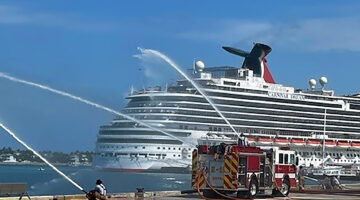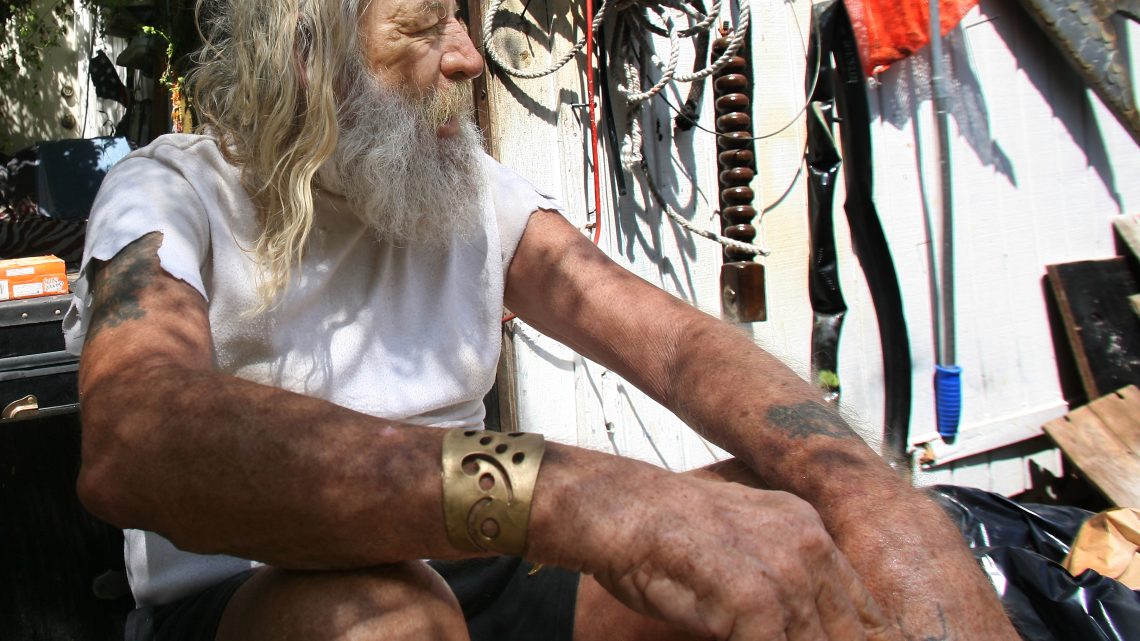‘Monkey’ Tom Forshier: An appreciation
BY TERRY SCHMIDA
KONK LIFE STAFF WRITER
Yet another little piece of “old Key West” passed on last week.
“Monkey” Tom Forshier, who for decades painted literally thousands of images in Key West, died at Lower Keys Medical Center, at the age of 79.
Details of the exact cause of death are still sketchy, but one fact is crystal clear: Forshier was a one-of-a-kind artist whose creative trajectory very closely tracked the fortunes of the town he made his home.
He painted his unique creations on driftwood, sailfish sails, centerboards, and T-shirts. Numerous Key Westers own at list one of his artworks; many more own several.
Forshier was born in Danville, Ill. He served in the U.S. Navy for five years, with many of those spent in Japan. He was a junior Olympic diver, and COMNAV 4 champion in Japan, a skill that would serve him well in Key West.
Upon his return to the United States, Forshier worked on AT&T microwave towers. One day, in 1965, in Crossville, Tenn., Forshier got a wild hair, and jumped into a 1950 Plymouth station wagon. He wanted out of the cold, and headed to South Florida. He arrived in Key West, and immediately found a job. Forshier spent the rest of his life here.
A photo in the Florida History section of the Key West library shows a young Forshier performing a swan dive from the top of the diving platform at the Key Wester Resort, where the Hyatt Wyndward Pointe stands today. He was working at the resort as a groundskeeper, but was a far more valuable tourist attraction as a diver.
Around this time, he picked up a squirrel monkey as a pet. The primate eventually died, but the “Monkey” moniker stuck and became Forshier’s nickname for a half-century.
He was a self-confessed barfly, and one day, as he sat at the Nightbeat (where Mangoes is today,) somebody asked him to paint a sign advertising the evening’s musical entertainment. Discovering that he had an innate talent, he began painting colorful seascapes at home and brought them with him to his favorite watering hole. He was offered money for one of them.
Through the 1970s and beyond, as Key West was mobbed by tourists and began to gentrify, Forshier hung on by his fingernails, homeless more often than not, but managed to eat and live by dint of his talent for painting maritime scenes, and strange portraits of a wild old man of the sea-type demon, which haunted him the rest of his life.
“I don’t know what it is,” Forshier said of the old man, back in 2006. “It just comes out when I sit down to paint . . . The tourists, they want seascapes, but this is the kind of stuff I’d rather do.”
Many of Forshier’s paintings were sold for as little as $10, $15, $20, making him one of the most prolific, and easily collected folk artists in Key West. His works can also be found on the walls of saltier bars and restaurants, such as the Rusty Anchor, Schooner Wharf, and Hogfish.
Film buffs can also see Forshier’s work in the 1974 film “92 in the Shade,” in the scene where Peter Fonda walks into a Key West bar. Forsher had painted the establishment’s exterior.
In recent weeks, Forsher had been admitted to hospital several times, including once after being electrocuted.
“He hadn’t been looking well lately,” said restaurateur Bobby Mongelli, who owns the Hogfish. “I could see that he was speaking slower, and seemed to be sort of delirious.”
Mongelli first met Forshier back in 1980, and frequently, along with the rest of his staff, fed Forshier when the latter’s money ran out.
In the end, though, time caught up with Forshier, just as it has with the affordable and community-minded Key West of his youth.
“It’s a tragedy really,” said local arts patron Erika Biddle, who met Forshier when she curated a show of homeless artists.
“I hate to see a veteran die homeless. It’s heartbreaking and unnecessary.”
[livemarket market_name="KONK Life LiveMarket" limit=3 category=“” show_signup=0 show_more=0]


Touching tribute. Thank you.